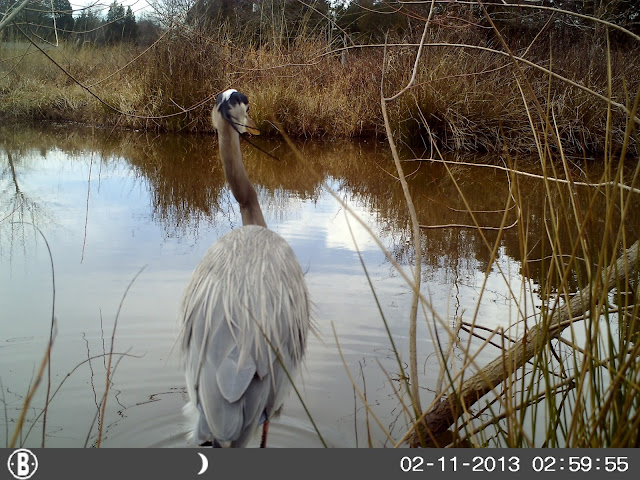It was a few months ago while I was walking along the banks of the Potomac River when I heard a group of people making noises of awe, disgust, and even excitement. I made my way over and saw the subjects of their gasping.
A great blue heron and a northern water snake were battling it out. The heron had the snake skewered in its beak. The snake was striking at the heron's neck and head, plucking feathers from it's blue-gray plummage.
I've seen snakes getting eaten by these birds many times in this park, but this was slightly different. This snake was fairly large for a heron to be tackling. It was a noisy, feathery, and somewhat bloody showdown.
The park patrons were asking me if I could do anything to stop the madness, but this was just nature playing out in front of our eyes and was happening about 30 yards away on a rock in the middle of the river.
I knew the snake would be eaten soon, but it struggled well. It was speared, skewered, and waiting to die. The heron was just waiting for it to tire out.
The madness ended just as I had expected it would: the last inch of the snake's tail slid down the bird's beak like a strand of spaghetti. The heron remains a great predator of the northern water snake.
Great Blue Herons are very large birds. Their wingspans can measure over 6 feet in length and have beaks as long as a steak knife Here are a few pictures of a heron that visited one of the camera traps that I had set out for a few days. This was Waterfowl Cam #1, a camera set on a pond bank specifically for birds in water.
This is the resident heron that lives in two ponds. It will sit in one pond for a few hours, picking the perfect spot to catch the perfect fish. When it does, it gobbles it up quickly, then moves to the far side of another pond close by and works that pond the same way.
All day long, it goes back and forth to get its daily fill of seafood.











.png)
.png)















